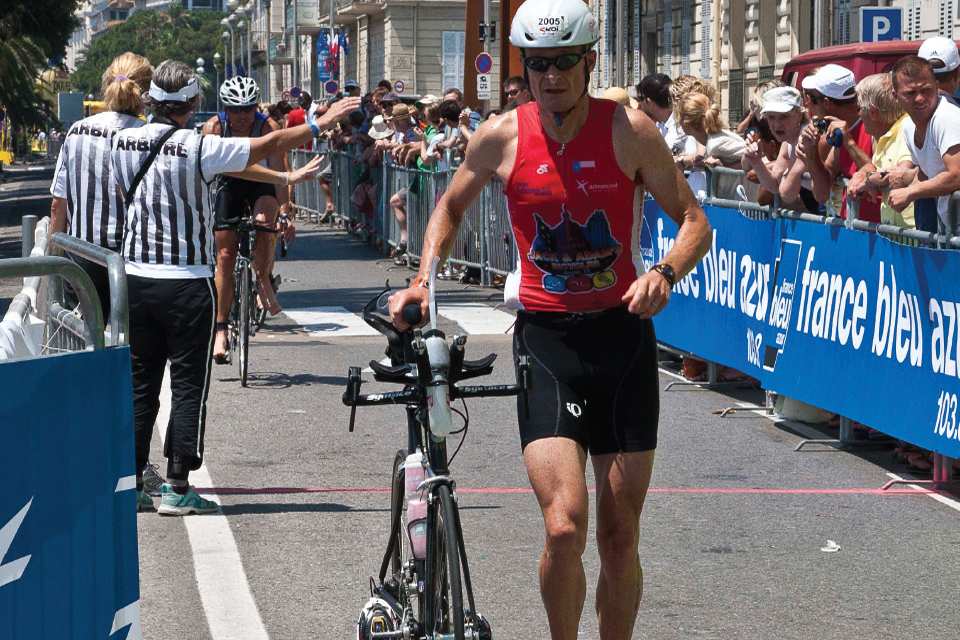The Traveling Triathlete

One of the main questions for triathletes when planning a training season is always which races to sign up for. There are a few different approaches to this, depending on the athletes’ priorities:
Favor strengths.
A strong climber should pick races with hilly bike courses, or a weak swimmer should pick courses with wetsuit legal non-ocean swims. Determine your strengths and consider the challenges in a venue—and work what you do well for best results.
Consider financial criteria.
There can be huge differences in race entry fees, and races that don’t require air travel or accommodation are a lot more affordable.
Choose a destination to combine racing with travel.
Choosing races based on destination has always been my preference. Triathlon training and racing is an active lifestyle, and so is travel. A lot of the larger triathlon races—Ironman and 70.3 races—are held at wonderful destinations. Combining a getaway with a triathlon is very motivating during the preparation and will make racing a fun experience.
I have often found that international destination races are not any more expensive than U.S.-based races. Airfare is typically a bit more, but local accommodation and transportation is often less expensive, and some races offer opportunities for homestays for international athletes. And after looking at the total cost and investment of getting ready for a long distance triathlon race, many athletes (me included) may decide that a small increase in travel cost is well worth the opportunity to experience a memorable destination.
When I speak to athletes about combining racing and pleasure travel, a few common concerns are regularly voiced:
 “The travel stress will mess up my race.”
“The travel stress will mess up my race.”
Solution: Go at least five to seven days before the race so that there is plenty of time to recover from the actual travel days. The days before the race give a good opportunity to explore the destination. There’s typically little training on the schedule, and the light activity required to explore is generally better than complete rest.
“I won’t be able to assemble my bike.”
Solution: Get help or learn how. Use one of the bike shipping services to the race (if available), or get the bike packed at your local bike shop, and then unpacked and assembled by a bike shop that supports the race. This service is available at most races. Or invest in a bike box and learn how to disassemble and pack your own bike. It’s a good skill to have; and with a little practice, assembly only take 15–20 minutes and is quite easy to do.
“My nutrition will get messed up.”
Solution Pack race-day fuel in the bike box, and stick with simpler, plain foods before the race. I’ve never had a problem finding athlete-friendly food before a destination race. Pay extra attention to hydration when travelling and only drink bottled water at the destination. After the race, there will be plenty of time to explore local meals and new food choices.
“I will underperform and have a slow race.”
I’ve had several of my best races at international destinations after long travel. The week before the race is always more relaxing than working until Thursday, traveling on Friday, and racing on Sunday, even when the destination is closer. A few extra days of downtime before the race are very helpful, and the excitement of traveling to a fabulous location also gives extra motivation.
The benefits of picking races based on destination far outweigh the risks. When racing internationally, you get to experience different cultures and meet other athletes from around the world. Overall training volume is typically much lower before and after big races, and a destination event provides a great opportunity to use and enjoy this extra time traveling and exploring. For those who take family or friends to races, picking a destination race is certainly a more exciting experience. After supporting your training for weeks and months, wouldn’t a trip to a race at a scenic mountain or beach destination be much more rewarding than a trip to Tempe, Ariz. or The Woodlands, Texas?
I leave you with a checklist for planning a destination race:
Pick the most exciting destination that you can afford. Choose the destination first, worry about the race logistics next.
Travel early, especially to international races, arriving five days or more before race day.
Plan light activities and plenty of travel recovery time for the days before the race.
Focus on travel and exploring, even before the race. These provide distractions, and you will be more relaxed going into the race. Don’t just hang around other athletes in the host hotel.
After long flights, pay extra attention to hydration, and try to schedule a light massage in the following one to two days.
Plan more adventurous activities after the race, and forget about training during the travel days after race day.
Book accommodation for the days before the race before leaving; arrange something locally for the time after the race.
Happy travels and successful racing!






